Your cart is currently empty!

HARI Official Brand Site

Regular preening keeps the feathers clean and well groomed. Without misting your parrot regularly, flight feathers may quickly become compromised. In the wild this can be detrimental, as consequences of compromised flight can endanger birds making them vulnerable to predators. Preening plays a key role in pecking order as well; birds that are flocked together or even a pair of birds housed together are more likely to engage in healthy preening activities, birds that are not well preened are seen as under dogs and can quickly fall down in the ranks.
Single companion parrots especially younger less experienced birds, can be encouraged to learn preening with misting and bathing activities. Fledglings love a good warm morning mist and will flap and put on an energetic display. This stimulates them into mutual preening rituals, preening sessions can be further encouraged especially when provided a basking opportunity after the misting.
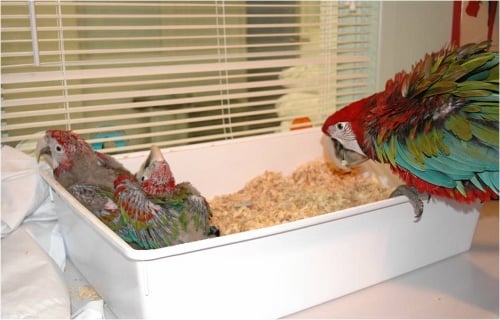
Surprising, young pre-fledged birds learn from their clutch mates while still in their nesting cavity or nursery bins as they begin preening one another as soon as their motor skills start to progress. Regrettably, some fledglings may not have the opportunity to be raised with another clutch mate. Parental guidance & other flock mentors can participate in the preening education. It is always important to ensure the compatibility of other birds with a new member in the preening flock. Over preening one another can also be a concern as this can lead to feather damage. Some birds who have a bad habit of over preening can bestow their habits upon other flock members. Birds that preen themselves excessively may have started due to a lack of misting, a poor diet, lack of preening education, a dry environment, boredom, hormonal onset, obesity, lack of exercise, or he could have been caged with a flock member that was overly engaged in preening.
If fledglings are not parent reared, human caretakers must ensure the preening education of fledglings in their care is acquired -a primary lesson featured in the Early Parrot Education Program. Your participation and enthusiasm in these sessions can keep your companion interested and ensure they maintain beautiful plumage. Misting and preening with your parrot can alert you to any onset of feather damaging behaviour. Furthermore, a health concern could be highlighted if interest lags for a bird that usually engages in this fun activity. Feather health and moulting patterns can also be monitored. Health concerns such as feet health and conditions affecting balance, dexterity and motor skills can prevent your bird from engaging in preening activities. Feathers that have not emerged from the sheath at the proper time can be a sign of lack of preening or nutritional deficiency. If a bird is housed alone this will be apparent mostly on the head as he can’t reach this part of his body very well on his own. Feathers that are not well preened can be extremely uncomfortable and your bird may start to pick and pluck them to remove any discomfort. This is usually a vicious cycle and can start a lifelong bad habit of feather damage behaviour.
If birds are flocked outside and have access to rain or regular showing, they will benefit and have more successful preening sessions. If the cage or flight of your bird is inside or is covered to protect from hot sun, high winds and cold rain, therefore never having birds exposed to natural rain, artificial rain system can be installed and set on a timer in order to ensure the birds are misted regularly. A misting adapter can also be placed on your garden hose for manual misting should you not have an automatic system.
Parrots kept indoors due to cooler climates easily get dry skin and feathers and need to be misted or bathed daily to maintain healthy lustre. Indoor heating (i.e. electric baseboards, oil furnaces), air purifier & exchangers draw a lot of humidity out of the air and your bird’s skin. Extreme temperatures may also require caretakers to house birds indoors with air conditioning, which can also contribute to a dry environment. Dry skin and dry brittle feathers can lead to the onset of feather damaging behaviour. Humidifiers and regular misting or bathing opportunities can help alleviate the dryness.
Experience being preened by other chicks in the clutch, by their parents or nurturing caretakers can have an extremely beneficial effect on the preening education of the pre-fledged chick, as well as the development, growth and emergence of the feathers which is critical at this stage.
A warm wet towel can be placed on the chick’s nape and back prior to a preening session. This soothing ritual softens the feather shafts by humidifying the emerging feathers and promotes easier preening, a skill that is taught by the parent bird. Preening can also be done through the towel, to further desensitize the chick to this material.
Pin feather preening & Towel desensitization go hand in hand!
The importance of desensitizing the chick to a towel is to get the bird accustomed to the future lesson of cradling as this too will become a part of his lessons as he progresses though his primary education process. It will be expected that sometime during this bird’s life, he will have to be toweled. Birds that are not accustomed to towel cradling, are stressed unnecessarily more so in the event of an emergency such as a broken blood feather or even a simple veterinarian exam. And, stressed birds also show a much higher white blood cell count, which could be misinterpreted in diagnostic procedure.
A basking light should be provided after the session to prevent the chick from getting chilled and encourage elementary preening on other clutch mates.
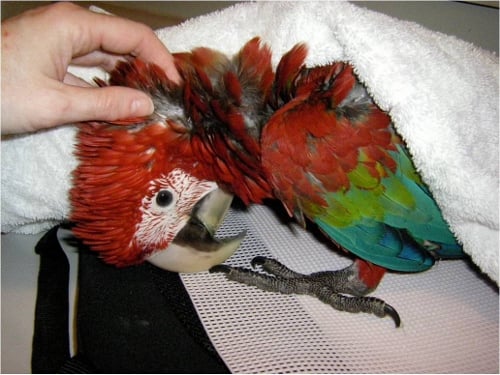
The pre-fledgling is now more comfortable to start exploring his chick pen or clutch mates and so natural instinctive activity of preening onto his mates continues to occupy part of his waken hours, along with elementary foraging activities
Misting and the provision of a basking light will naturally encourage preening activity and exercise through flapping. The light is essential (in cooler weather) to prevent the fledglings from becoming chilled when wet.
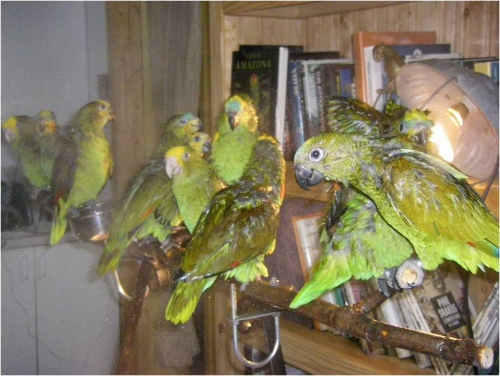
Exercise is crucial at this stage prior to any feeding or interaction in order to expend excess energy. This activity also promotes development of pectoral muscles. Ideally exercise sessions should be offered a minimum of twice per day to provide caretakers have time to attend to regular husbandry duties.
The fledglings should now engage in longer misting sessions allowing feathers to get thoroughly soaked; this will stimulate exercise & preening activity. Individuals should demonstrate their enjoyment while misting by vocalizing and/or wing flapping.
Individuals who do not actively take part in the flock misting activity should be moved to a quieter and more secluded and comfortable location and evaluated for health. If health is not an issue you could perhaps:
Allow them to perch away from a flock mates by which they are intimidated. Offering a more timid individual a more comfortable environment back into their fledgling cage can usually aid in re-establishing enjoyment of the misting and preening activity if their health is not a concern
Since fledglings at this stage are more accustomed to different sounds, the hair dryer can now be introduced after a misting session. The dryer simulates the wind and encourages the fledgling to ruffle their feathers, an activity of which they may grow fond.
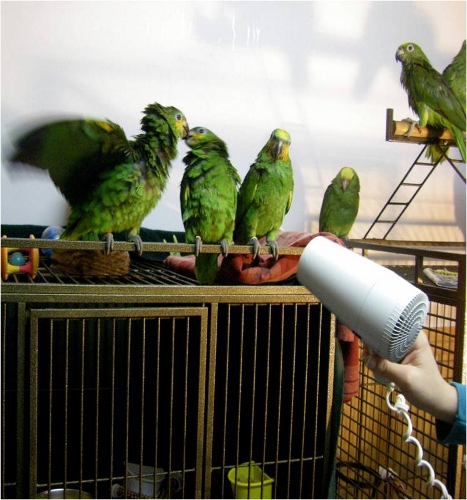
Socialization & preening with younger chicks should be monitored, encouraged & rewarded with praise and nurturing.
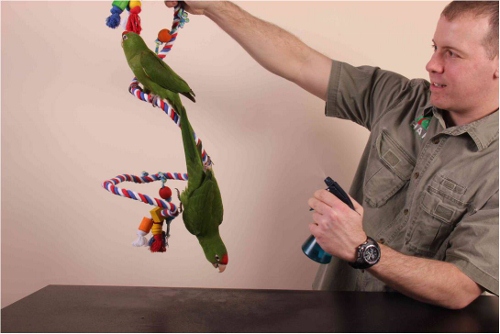
Self preening must continue to be encouraged, especially when fledglings are allowed to spend time on their own following a misting activity. Engaging in this activity usually demonstrates the bird is comfortable in his surrounding and most likely healthy.
Training stands should always have a water and feeding dish, to ensure birds are not hungry nor thirsty during training sessions. The EPE philosophy firmly believes fledgling must not be trained with food as a reward. Mentors must respect their intelligence and capacity to learn without luring them. Rules of conduct have been established in previous stages.
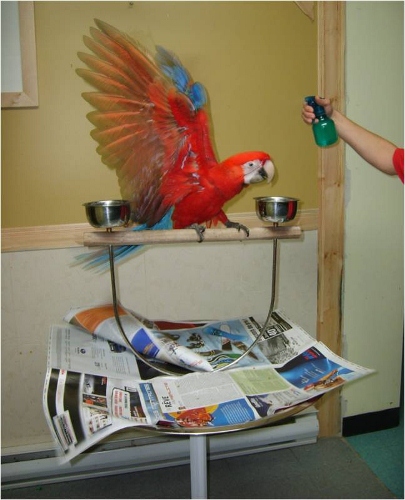
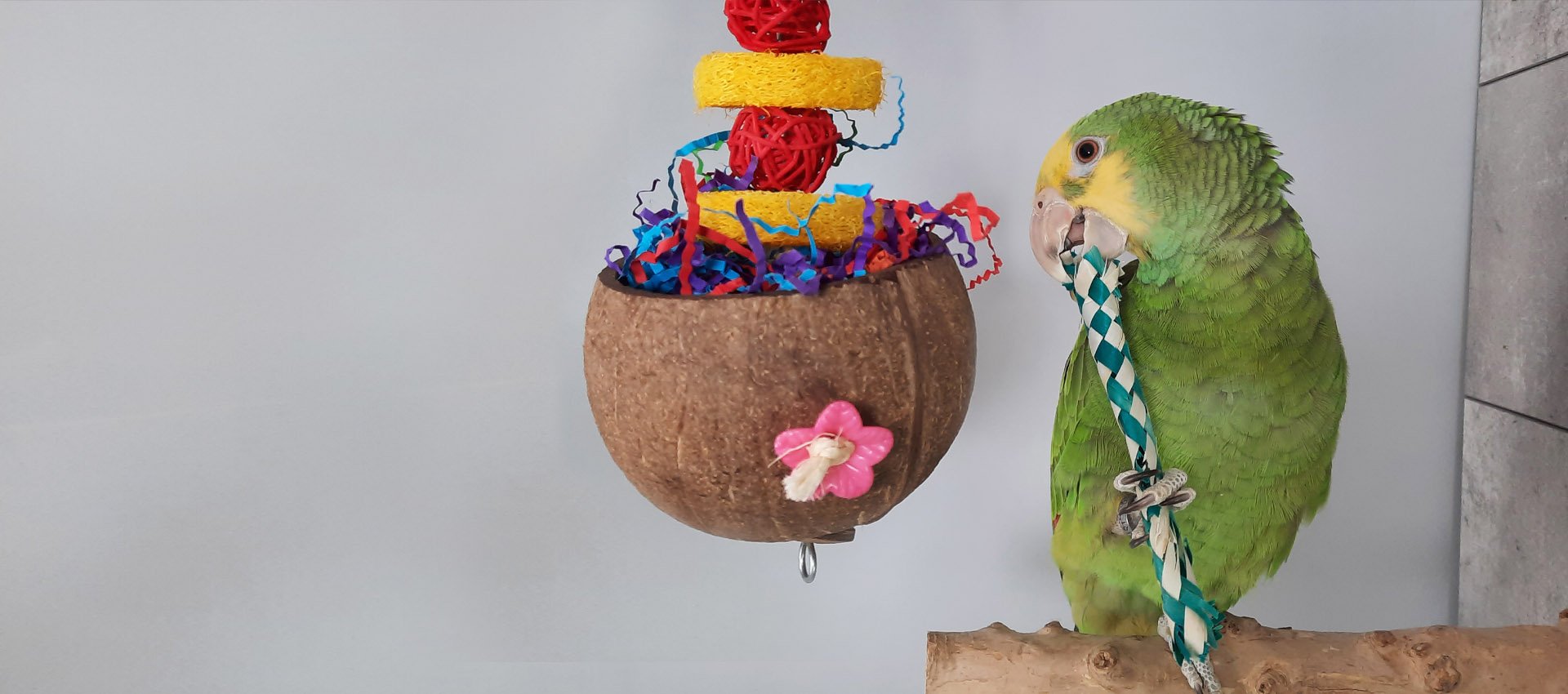
If you’re looking for a way to help your pet bird thrive, look no further than the Early Parrot Education Program. This program provides birds with essential life skills that will make them excellent companion animals.